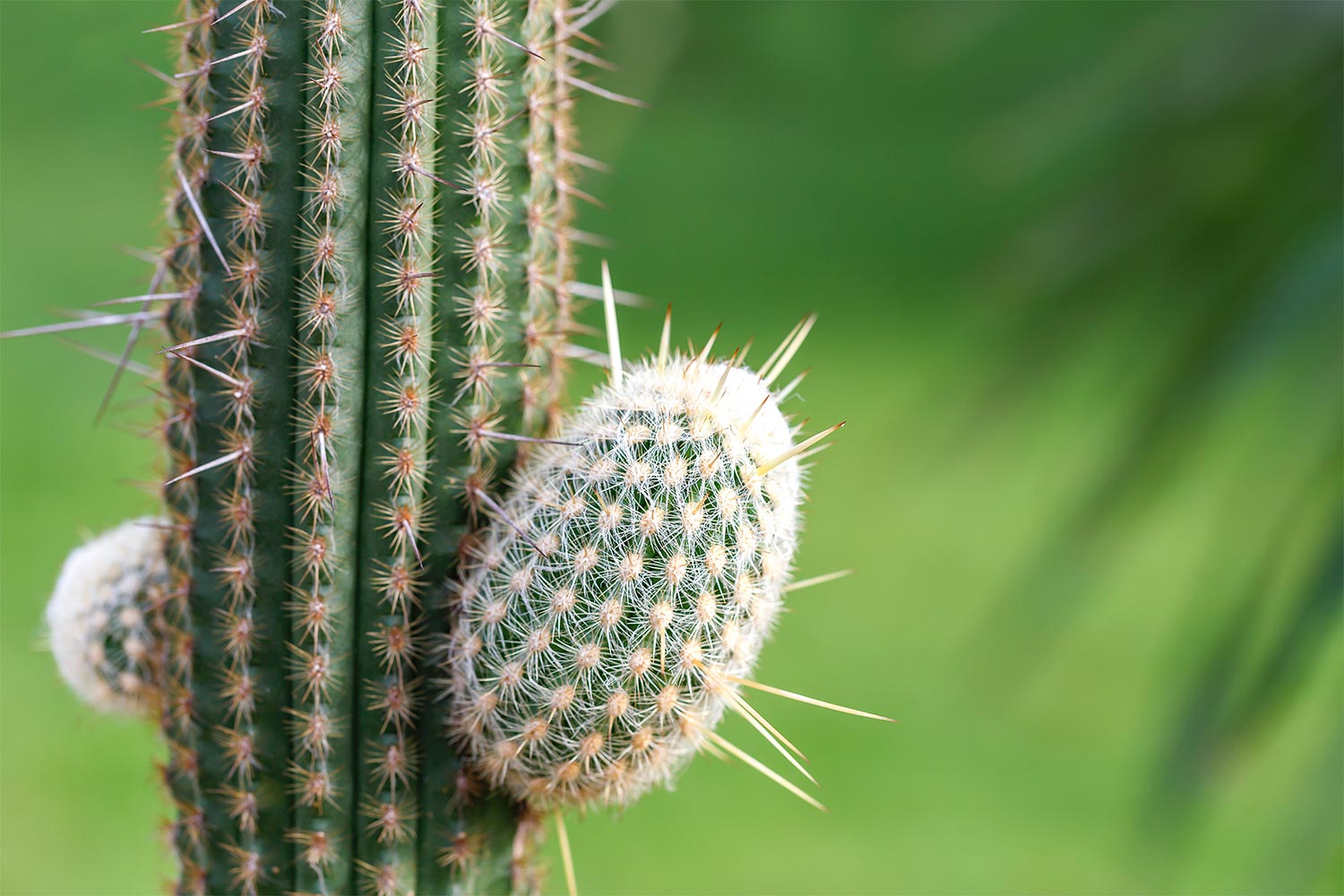
In order for living things to survive, they need nutrients. Plants, which cannot move once they’ve taken root in the ground, obtain nutrients through photosynthesis. Photosynthesis is the process by which plants use the power of sunlight to create a nutrient called glucose from water and carbon dioxide.
For this to happen, the plant must open tiny pores—called stomata—to absorb carbon dioxide from the air. However, for cacti that live in water-scarce deserts, opening their stomata during the bright, hot daytime could cause them to lose all their stored moisture and dry up. In order to survive in the desert, they need a safe strategy to acquire nutrients. So, cacti have developed a method of absorbing and storing carbon dioxide at night when there is no sunlight. Then, during the day, they can perform photosynthesis without having to open their stomata.
In this way, cacti optimize themselves to their environment, drawing nutrients even from the scorching and dry desert. This shows us that even in harsh and barren conditions, seeking solutions and pioneering forward allows us to thrive.